Defining the Western
If John Wayne isn't the star, is it even a Western? The answer to this can be found by defining the Western.
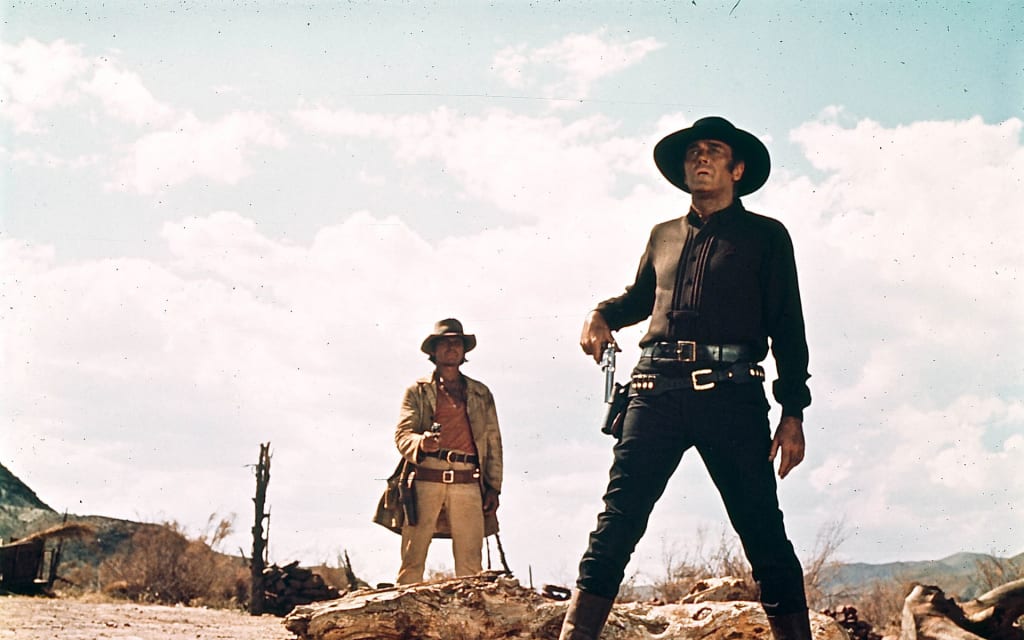
After much movie-watching, researching about film, and a thought-provoking conversation or two, I ask myself: is "The Western" a genre of a film, or just the setting of one? How do you define it? If John Wayne isn't the star, is it even a Western? Do people still even make western films?
Before I dive into all these not-so-rhetorical questions, it's important we look at the conception and history behind the Western genre.
The Closing of the Western Frontier
In 1895, Frederick Jackson Turner, American historian and writer, published The Closing of the Western Frontier. It indicated that one of the most distinctive characteristics of America was the massively unoccupied land: the West. This land gave people an opportunity for a fresh start, as it could reestablish themselves and set up a new life. The West was considered a "safety valve" for America.
This paper came with a warning, however. The frontier is indeed closing, and we won't have the opportunities we have now if we wait to occupy the west. Thus, America would become less democratic and lose its distinctiveness. We will be more like Europe, Turner posited. Overall, the Turner thesis was a rigorous analysis of America and made people think about the future of the West.
The Western was born when there was a fear that the West was disappearing as a frontier available to the country (even though it was not). Most Americans would only move a couple miles away when relocating, but migration still continued significantly. The Western genre was created for an earlier, better time. During the great wave of Manifest Destiny, expanding America by migrating west was highly promoted, and after Americans took over the whole country, there was a lull in that spirit.
Thus, the Western was born.
So, What is a Western?
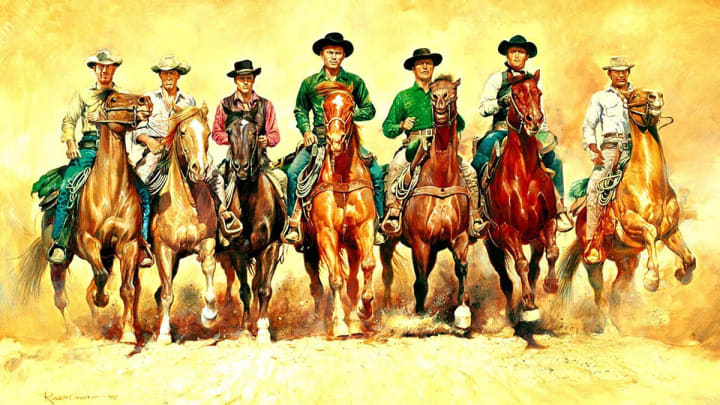
Poster from The Magnificent Seven
A Western is the setting, which is an open space in the West. As redundant as it sounds, this was the mythic space that savagery was about to give way to civilization. The savagery was associated with Native Americans. In early Westerns, we know the outcomes and we support the outcomes of civilizations over savagery. Later on, of course, Westerns would take on a different form.
The central figure of Westerns was the cowboy. This hero became the archetype of American culture over time, as it exuded masculinity. He is a free thinker, rarely has a past that anyone would know about, and rejects love, compassion, and domesticity—as it is the opposite of an impulsive cowboy who is always on the run.
We see it in major movie stars, such as John Wayne, Sylvester Stallone, and Harrison Ford, decades after the original conception of the Western. There is a fear in American culture that without the Western, American identifies with a loss of masculinity in an urbanized and bureaucratic society.
The moment when the Western is found, there is concern about immigration, a loss of power, and influence by writers, a loss of masculinity, and a closing frontier. So, writers preserved it the best way they could, and even on a subconscious level, it is part of our culture today.
The Founding Fathers of the Western

Painting by Frederic Remington
There are several founding fathers of the Western. They are President Theodore Roosevelt, Owen Wister, and Frederic Remington.
Roosevelt was a New Yorker, along with President of the United States. He wrote The Winning of the West, which argues that the true test of masculinity is willingness to engage in savage wars. He also established national hunting parks to reenact the Western experience. Roosevelt led the Rough Riders in the Spanish American War, and treated all minorities like Indians. According to him, the West was a "heroic, war centered, Anglo-Saxon space," and we needed to take it as ours.
Wister was native of the East coast, but went west in an effort to regain his health. A Harvard man, he managed a cattle company, and went on to write an iconic Western novel, The Virginian. This novel focused on the differences between East and West, claiming that the West is essential for democracy, individualism, and freedom.
Remington was a journalist and a prolific artist. He thought the West was necessary to American virility, masculinity, and identity with its great open space. As far as he was concerned, commercialization and industrialization destroyed manhood in America. He also hated immigrants and referred to them as “the rubbish of the earth I hate.”
Riders of the Purple Sage & Film
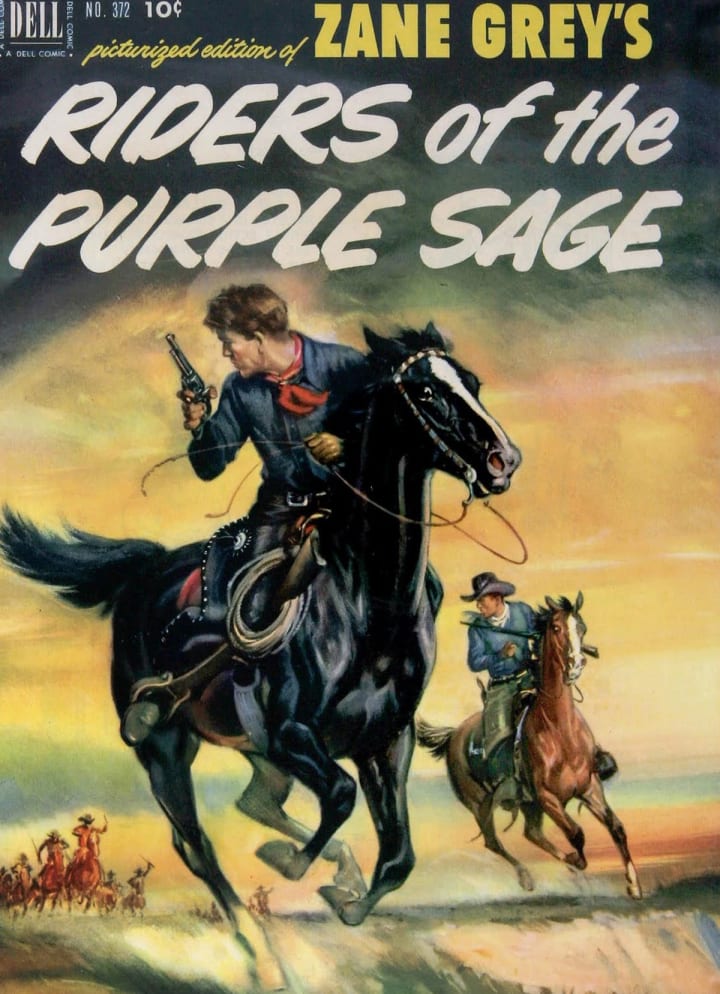
The Western novel represents idealism, freedom, and opportunity. The quintessential Western novel is Riders of the Purple Sage, with its archetypal cowboy Lassiter. In Western novels and movies, cowboys aren't depicted truthfully. In real life, they were actually African Americans and other minorities. They became a representation of Anglo-America instead to maintain the "ideal masculinity." Lassiter was very stereotypical as far as the Western hero goes. As we look back retrospectively, he was an anti-hero. The novel painted the image of the individual strong, which led some readers to believe it was unintentional propaganda.
Compared to the other characters in the novel, along with in Westerns overall, Lassiter’s dialogue is simple, as cowboys were much less sophisticated. And the purple sage plant itself? This was symbolic, since it had mythical healing powers. This aspect of the purple sage puts it directly into the idea that the West is a mythical space that must be explored and taken over.
The Western genre also presents a political side to it, as land was taken away from Native Americans due to expansionism.
Enter film: it established the Western as a mythic American space more than anything. The concept of the Western and the film industry were born around the same time. The way that films depicted Westerns was in our view of what they are. The costumes, settings, props, and locations became what we thought the West was and what a Western should look like. However, they are not factual. For example, cowboy hats were not worn in reality, as we will see the John Waynes of the silver screen adorn. They actually went out in suits.
William S. Hart was the first Western movie star. This New Yorker was the first archetypal Western hero at forty-nine years old. He was tall, boney, and tight-lipped. One role he played was a wandering gambler who would be redeemed by a good woman. However, his movies ended with violence, which would leave civilization with less corruption. Thus, he would pick up his things and find someplace with more disarray.
From 1900 to about 1930, Westerns were associated with the heroic phase of industrial and democratic progress, along with the vanquishing of the Indians (a decidedly inferior race). Americans wanted to make way for civilization.
After the 1930s, Westerns were darker and more complicated thematically. They began to criticize some aspects of the American Western movement and its progress. These films made Americans realize that they should think about the West as land that was stolen from Native Americans. Naturally, the triumph of civilization had unfortunate consequences, politically, socially, and economically.
But... Is the Western Dead?
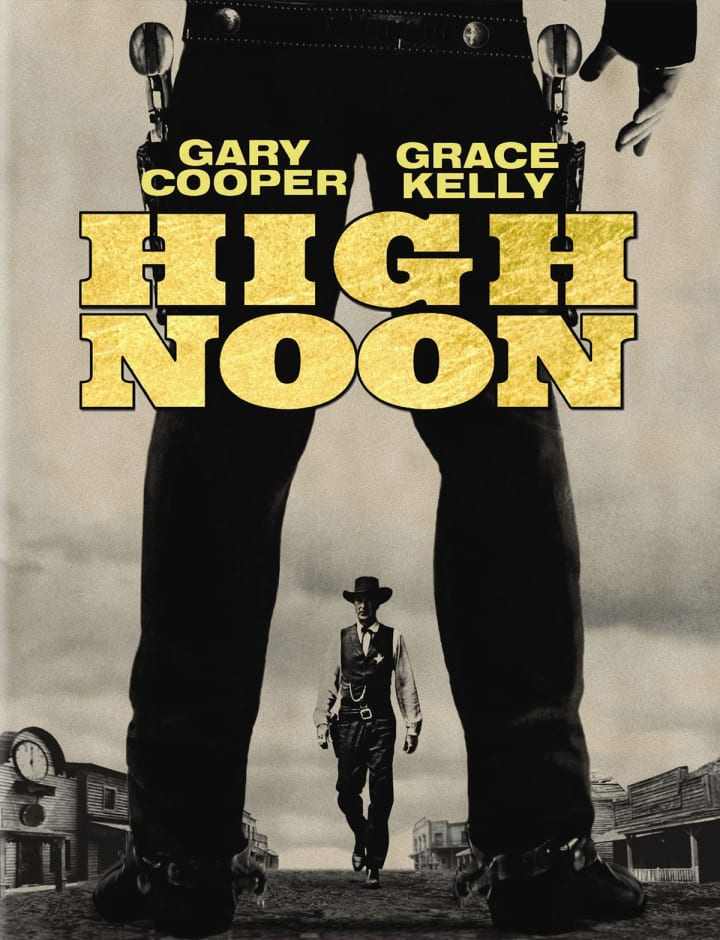
The Western is not dead. The genre keeps coming back, and has always been used as a critique of civilization in a unique way that may have nothing to do with cowboys at all. During the Cold War, it was a backdrop to criticize censoring in films. By romanticizing the western genre in films like High Noon, audiences were given a timeless feel to the current state of affairs.
The Western was a profound blacklist allegory. As High Noon complies with the Western background, there is much to be said, as writers and those wrongfully accused of communism interpret the film as a means of taking back the American values that is rightfully theirs. Such is the nostalgia seen at the turn of the twentieth century and forward, even to today in American culture.
Stagecoach is another great example of the Western genre’s representation of society. The John Wayne film that had revived the Western genre in 1934. It noted that maybe triumph shouldn’t be celebrated ambiguously. However, the themes of the Western were unambiguous since they supported democracy and romanticizing the America that was.
Like everything, the nature of Western genre films has changed overtime to conform with what society sees them as. The romanticizing of the West has always been a cinematic constant, 10 gallon hats or not.
About the Creator
Marina Caitlin Watts
Marina loves Frank Sinatra and hates decaf coffee. The native New Yorker and Cornell grad knows every word to "Ferris Bueller's Day Off" and thinks Shakespeare is cool. If you need her, she's waiting for Godot. Twitter: @marina_caitlin



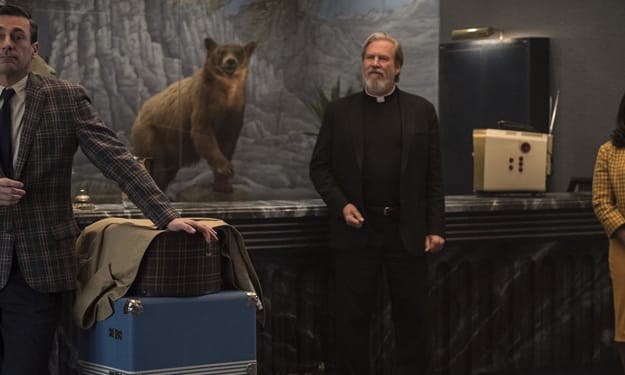



Comments (1)
It's really nice